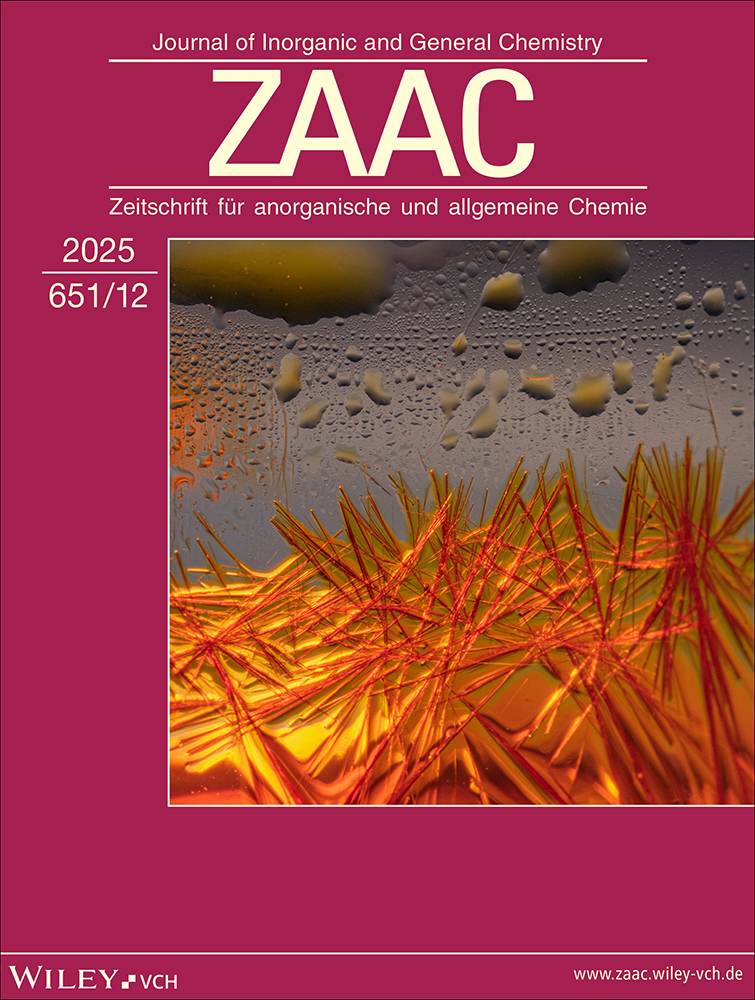Palladium(II)- und Platin(II)-Komplexe mit dem Antimalariamittel Mefloquin als Liganden
Abstract
deDas Koordinationsverhalten des Antimalaria-Mittels Mefloquin (L) wird untersucht. Die Reaktionen der chloroverbrückten Komplexe [(Allyl)Pd(μ-Cl)2Pd(Allyl)] und [(R3P)(Cl)M(μ-Cl)2M(Cl)(PR3)] (M = Pd, Pt) mit racemischem Mefloquin führt zu den Verbindungen [(Allyl)-(Cl)Pd(L)] (1), [Cl2(Et3P)Pt(L)] (2) und [Cl2(Et3P)Pd(L)] (3) mit der Koordination des Piperidin-N-Atoms des Mefloquins. In Gegenwart von NaOMe werden die N,O-Chelat-Komplexe [Cl(Et3P)Pt(L–H+)] (4) und [Cl(R3P)Pd(L–H+)] (5, 6, R = Et, nBu) erhalten. Die Abschirmung des Piperidin-N-Atoms des Mefloquins durch Protonierung erlaubt die Synthese der Komplexe [Cl2(Et3P)Pt(L + H+)] (7), in denen Mefloquin über das Chinolin-N-Atom koordiniert ist. Die Strukturen von 2, 3 und 4 werden durch Röntgen-Beugungsmethoden ermittelt. Im Kristall von 4 werden Paare von Enantiomeren gefunden, die über zwei Wasserstoffbrücken zwischen der Amin-Gruppe und dem Chloroliganden miteinander verbunden sind.
Abstract
enMetal Complexes of Biologically Important Ligands. CXXVI. Palladium(II) and Platinum(II) Complexes with the Antimalarial Drug Mefloquine as Ligand
The coordination sites of the antimalarial drug mefloquine (L) were studied. Reactions of the chloro bridged complexes (allyl)Pd(μ-Cl)2Pd(allyl) and (R3P)(Cl)M(μ-Cl)2M(Cl)(PR3) (M = Pd, Pt) with racemic mefloquine give the compounds (allyl)(Cl)Pd(L) (1), Cl2(Et3P)Pt(L) (2) and Cl2(Et3P)Pd(L) (3) with coordination of the piperidine N atom of mefloquine. In the presence of NaOMe the N,O-chelate complexes Cl(Et3P)Pt(L–H+) (4) and Cl(R3P)Pd(L–H+) (5, 6, R = Et, nBu) were obtained. Protection of the piperidine N atom of mefloquine by protonation allows the synthesis of the complexes Cl2(Et3P)Pt(L + H+) (7) in which mefloquine is coordinated via the quinoline N atom. The structures of 2, 3 and 4 were determined by X-ray diffraction analysis. In the crystal of 4 pairs of enantiomers are found which are linked by two hydrogen bridges between the amine group and the chloro ligand.




